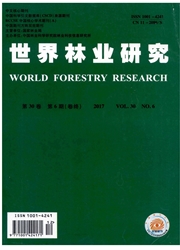

 中文摘要:
中文摘要:
重金属镉(Cd)污染已经成为严峻的环境问题之一,近年来将杨树作为重金属Cd植物修复物种的研究越来越多。文中从杨树生长、光合作用、抗氧化酶活性、可溶性蛋白含量和分子水平上的变化等方面综述了杨树受到Cd胁迫后的生理生化响应;阐述了杨树对土壤Cd的吸收及污染土壤中Cd在杨树体内的分布规律和杨树对Cd的抗性机制;指出杨树对土壤中重金属Cd具有较强的抗性,且这种抗性与杨树品种、树龄、土壤类型、土壤中Cd质量分数等有关;展望了对杨树Cd胁迫的深入研究方向,以期为未来关于杨树修复土壤Cd污染提供更多的理论参考。
 英文摘要:
英文摘要:
Heavy metal Cd pollution has become studies have been conducted on the poplar as one of the serious environmental issues. More and more Cd phytoremediation spices in recent years. This paper reviewed the physiological and biochemical response of poplar to Cd stress in terms of the growth photosynthesis, antioxidant enzyme activity, soluble protein and the change of molecular Level, an d discussed the uptake of soil Cd by poplar and the distribution of Cd in poplar as well as resistance mechanism of poplar. The results showed that the resistance of poplar to Cd is strong, and however is related to poplar varieties, poplar ages, soil type and soil Cd concentration. The prospected research direction of poplar response to Cd stress would provide theoretic references for the use of poplar to Cd stress.
 同期刊论文项目
同期刊论文项目
 同项目期刊论文
同项目期刊论文
 期刊信息
期刊信息
